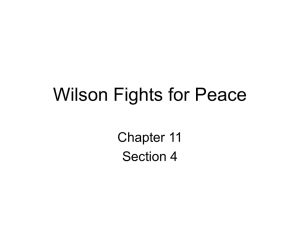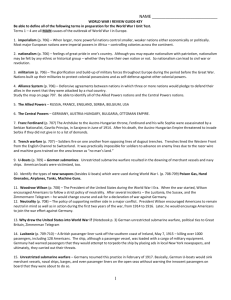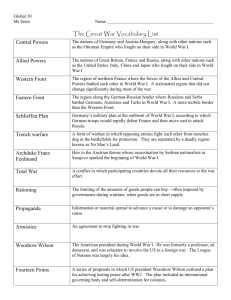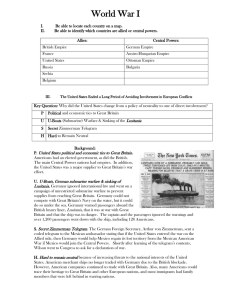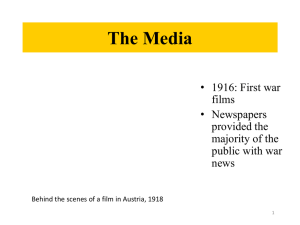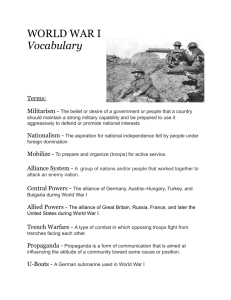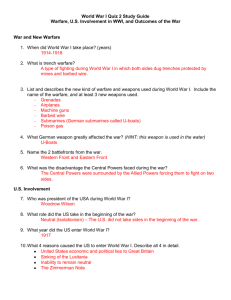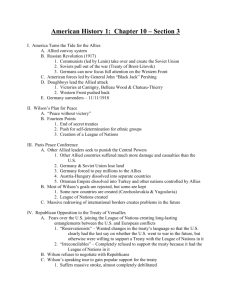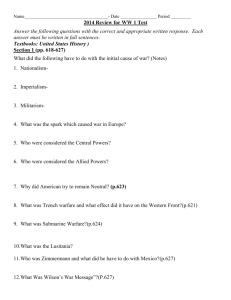Chapter 6 Lesson 3: “World War I” Study Guide
advertisement
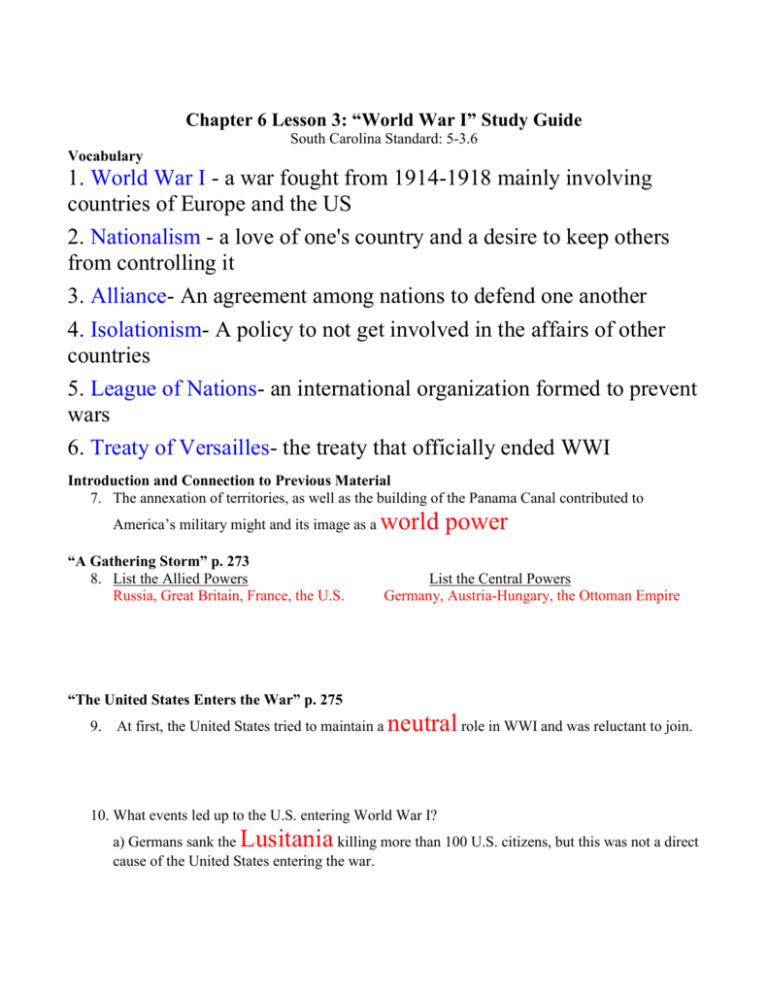
Chapter 6 Lesson 3: “World War I” Study Guide South Carolina Standard: 5-3.6 Vocabulary 1. World War I - a war fought from 1914-1918 mainly involving countries of Europe and the US 2. Nationalism - a love of one's country and a desire to keep others from controlling it 3. Alliance- An agreement among nations to defend one another 4. Isolationism- A policy to not get involved in the affairs of other countries 5. League of Nations- an international organization formed to prevent wars 6. Treaty of Versailles- the treaty that officially ended WWI Introduction and Connection to Previous Material 7. The annexation of territories, as well as the building of the Panama Canal contributed to America’s military might and its image as a world power “A Gathering Storm” p. 273 8. List the Allied Powers Russia, Great Britain, France, the U.S. List the Central Powers Germany, Austria-Hungary, the Ottoman Empire “The United States Enters the War” p. 275 9. At first, the United States tried to maintain a neutral role in WWI and was reluctant to join. 10. What events led up to the U.S. entering World War I? Lusitania a) Germans sank the killing more than 100 U.S. citizens, but this was not a direct cause of the United States entering the war. b) Germany sent the Zimmerman telegram to Mexico inviting them to join the Central Powers and promised to get land back from the U.S. if they joined. This was intercepted by the British. c) Most importantly, unrestricted submarine warfare by Germans d) Other reasons: wartime propaganda (similar to yellow journalism), traditional sympathies, and commercial ties with Great Britain strained U.S. neutrality 11. The Zimmerman telegram led the American public to support going to war after it was published. 12. Who was the President of the U.S. who asked Congress for a declaration of war in order to “make the world safe for democracy”? Woodrow Wilson “America at War” p. 276 13. What were American troops known as? doughboys “The War Ends” p. 279 14. The doughboys were instrumental in repelling the final assaults of German troops on the western front , breaking the deadlock of trench warfare . 15. The Central powers agreed to an armistice with the allied powers , on the condition that Wilson’s Fourteen Points would guide the peace negotiations. “The United States and the Peace Process” p. 280 16. What treaty officially ended World War I? Treaty of Versailles 17. What organization did the treaty help to create? The League of Nations 18. Why was the League of Nations formed? To keep peace and end wars refused to approve it because many thought the League of Nations would take away Congress’s right to declare war. 19. The U.S. Senate Additional Information 20. Wilson played a significant role at the negotiations, but many of his 14 Points were ignored by other nations 21. Wilson helped redraw state borders in Europe so that they better reflected of people with the same language, religion, and ethnic heritage). nations (groups 22. Despite the American refusal to join the League of Nations, the U.S. continued to be involved in world trade in the 1920s. 23. In the 1930s, Congress limited American involvement in world affairs in a series of laws called Neutrality Acts . These attempted to keep the U.S. out of the trouble brewing in Europe . the Great Britain , France , and others. This alliance became the basis for the creation of the United Nations , which replaced the League of Nations. 24. When the United States finally entered World War II , the U.S. allied with


